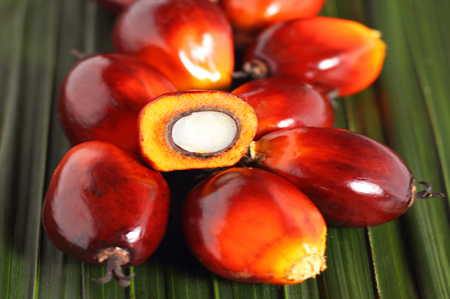Palm Oil Vulnerable to ‘Buying Wave’, says Sipef, as Futures Bounce
Category: Oilseeds
 (Agrimoney) – Sipef forecast an end to retreats in both palm oil and rubber prices, saying markets had already factored in a stack of bearish factors, even as futures in both commodities staged revivals.
(Agrimoney) – Sipef forecast an end to retreats in both palm oil and rubber prices, saying markets had already factored in a stack of bearish factors, even as futures in both commodities staged revivals.
The plantations group said that palm oil investors appeared “to be ignoring the tight stock environment” for the vegetable oil, in allowing a tumble of some $100 a tonne in Rotterdam prices so far this year.
Kuala Lumpur palm oil futures on Wednesday touched an eight-month low of 2,450 ringgit a tonne, taking their decline for 2017 to 21%.
The group said: “Everyone is talking about the massive palm oil crop ahead of us,” as production in top growers Indonesia and Malaysia recovers from drought, blamed on El Nino, which hurt output last year.
Fellow producer MP Evans earlier this month reported that “stocks of crude palm oil began 2016 at record-high levels, but were drawn down during the year in response to low production and finished the year at a multi-year low level of less than 10m tonnes”.
‘Buying wave’
Sipef added that the prospect of another huge soybean crop this year in the US, where sowings of the oilseed are expected to hit a record high, was “another cloud that is hanging over our market”, with soyoil a major competitor to palm oil for many uses.
However, “this seems to be priced in, and palm oil is currently competitive versus liquid oil,” the group added.
“Therefore, we expect that any surprise that could lead to supply disruption, such as less growth in palm oil than expected; bad weather disrupting the US bean development; or longer term, the creation of another El Niño, will trigger a buying wave.”
Consumption from biofuels plants in Indonesia, which has attempted to boost demand for palm oil by boosting biodiesel use, was likely to increase too “at these lower prices.
“We remain positive that we are currently at the lower end of the price range.”
Rubber price outlook
For rubber – futures in which have plunged 43% since hitting a five-year high in Tokyo in late January – Sipef was “confident that we will keep steady prices in the coming months”, albeit with values likely to prove lower than those enjoyed earlier in the year.
The group acknowledged pressure on values from liquidation by Chinese speculators, besides a recovery in output in top grower Thailand from rain damage, with stock sales by the Bangkok government also weighing on values.
“Despite the current bearish tone, the supply and demand globally are in much better balance than a year ago,” SIpef said.
The comments came as rubber futures soared 4.0% to 211.30 yen a kilogramme in the afternoon session in Tokyo, after touching a five-month low of 198.00 yen a kilogramme earlier on Thursday.
Palm oil futures stood up 1.5% at 2,503 ringgit a tonne in late deals in Kuala Lumpur, after in the last session hitting an eight-month low of 2,450 ringgit a tonne.
Hedging strategy
Sipef added that it had sold 42% of its forecast rubber output for the year, at an average price of $2,307 a tonne, a little behind the 49% of forecast production it had hedged as of a year ago – although at a lower price, of $1,267 a tonne, reflecting the weaker market prevailing at the time.
For palm oil, the group was a touch ahead on hedging compared with a year ago, having fixed prices for 45% of its forecast production, six points ahead of the 2016 pace, with the acceleration reflecting a strong start to the year for output.
“The higher-than-expected palm oil production volumes in the first [January-to-March] quarter allowed us to sell at good spot prices and already to hedge a substantial part of the second quarter,” Sipef said.
Production slowdown ahead
The group’s palm oil output, at 80,882 tonnes in the January-to-March period, was 22% higher year on year, with growth “most marked in the mature plantations of North Sumatra, and in the overall operations of Papua New Guinea”, with increases of 22% and 34 respectively.
However, the company flagged a slowdown in output growth, saying that “It is already obvious that the strong production increases of the first quarter will not persist during the second quarter.
“Smaller numbers of unripe fruit are reported in our oil palm plantations for the coming months, which means that we will see more ‘normal’ growth volumes of around 10% in the next period.”
Sipef shares stood 1.7% higher at E62.27 in morning deals in Brussels.




